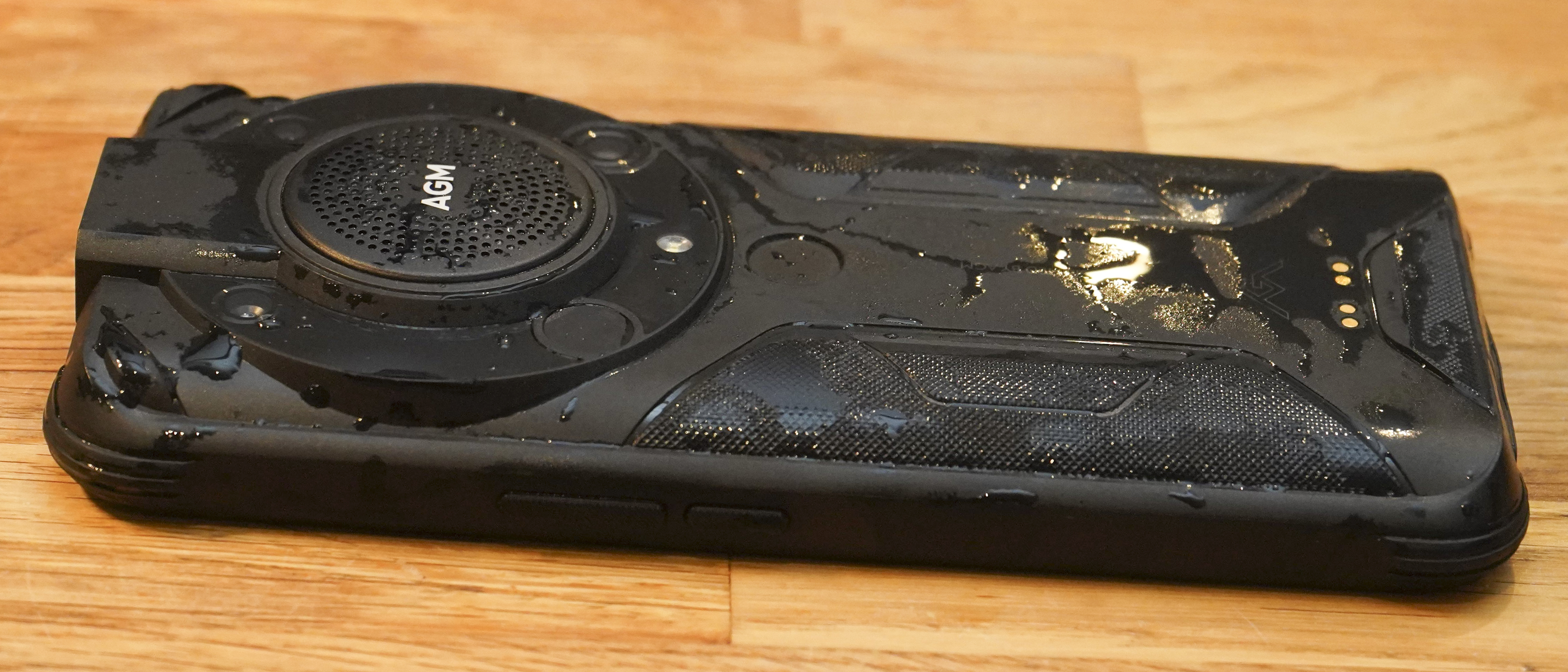Digital Camera World Verdict
With thermal and night cameras, the AGM Glory Pro is a rugged phone which offers a host of functionality – including a top-notch thermal camera. It’ll suit not just the typical tradesperson but campers, hunters, and all kinds of outdoor enthusiasts, and is backed up with a decent if unexciting chipset, pleasingly bloatware-free Android 11 installation and 5G radio. Size and weight are noticeable, styling isn’t for everyone, but it means business and can survive a lot more than just taking a few tumbles on site.
Pros
- +
High resolution thermal and night vision cameras
- +
Exceptional low temperature performance
- +
Ghetto-blaster speaker
- +
Wireless charging
Cons
- -
Unless you need it often, the extra flashlight adds bulk
- -
No 4K
- -
Despite 5G, there is no mmWave
Why you can trust Digital Camera World
It’s immediately clear that AGM have done more than added a rough-and-tumble look to an average 5G phone and called it “rugged.” For many in the trades that seems to be enough; many rugged handsets are only 4G so we’re already moving up, but this device works to earn that ‘Pro’ moniker by packing practical features that could serve in contexts across professional trades (especially HVAC), camping, disaster relief and more.
AGM have taken temperature protection seriously too, meaning this handset will survive for a day at -27°˚C (-16.6°˚F), and even an hour at -40°˚C (-40˚°F) from its 6,200mAh battery, so you’ll be able to stand out in the cold and identify patches of warmth with that thermal camera, whether you are on a search and rescue or identifying issues on site. Construction workers and mountaineers understand the benefits of a device which will survive the cold, and work where there isn’t traditional light. Indeed it can provide up to 120 lumens via a flashlight at the top (or front, if you’re using it like a flashlight); about twice as bright as most phones.
AMG Glory Pro: Specs
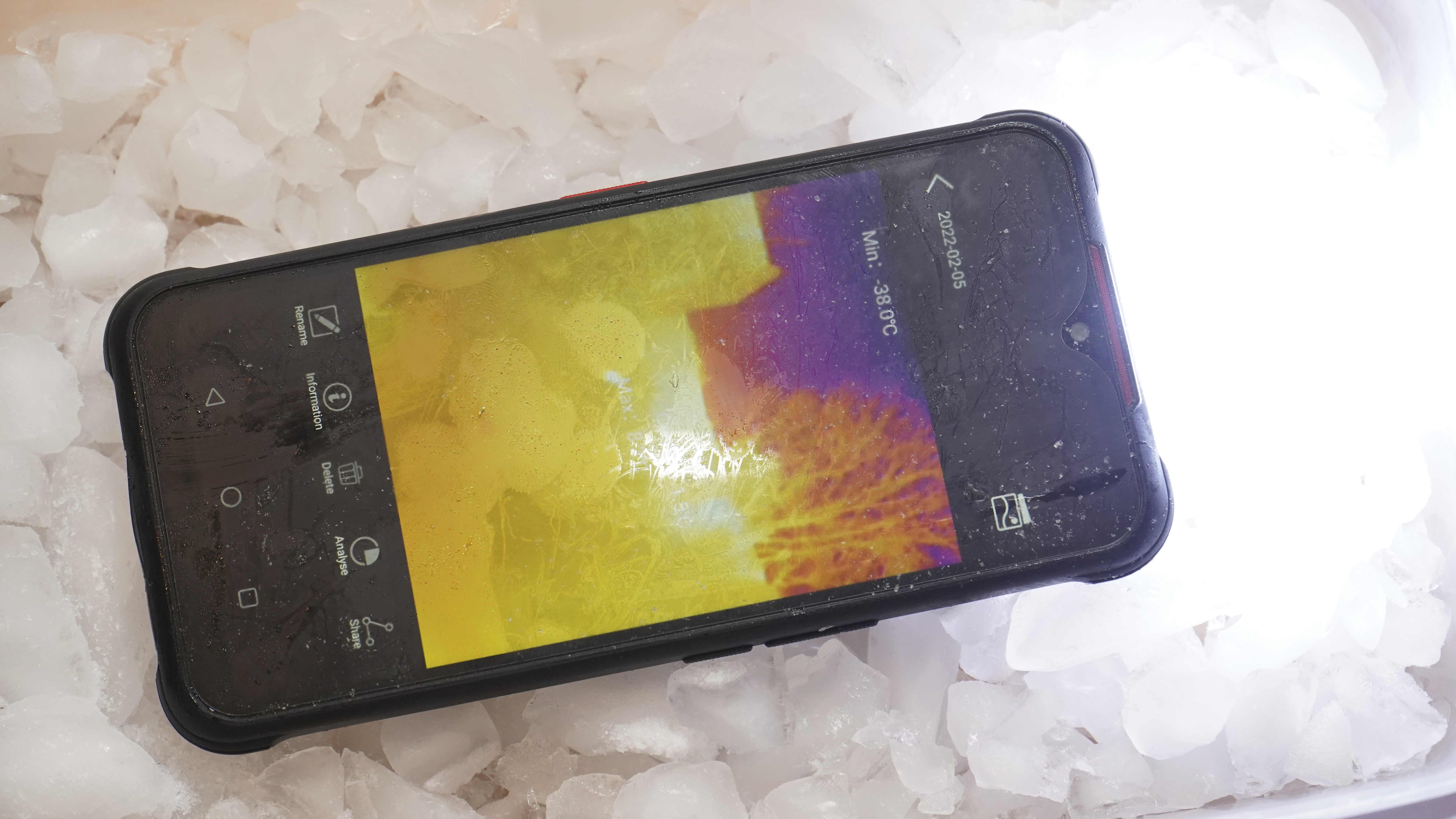
CPU: Snapdragon 480
GPU: Adreno 619
RAM: 8GB
Storage: 256GB
Screen size: 6.53-inch
Resolution: 2340x1080
Weight: 370g
Dimensions: 175 x 84 x 23mm
Rear camera: 48MP Main, 2 MP Macro, 20MP Infrared Night, 256 x 192 Thermal
Front camera: 16MP
OS: Android 11
Battery: 6.2Ah
AMG Glory Pro: Design
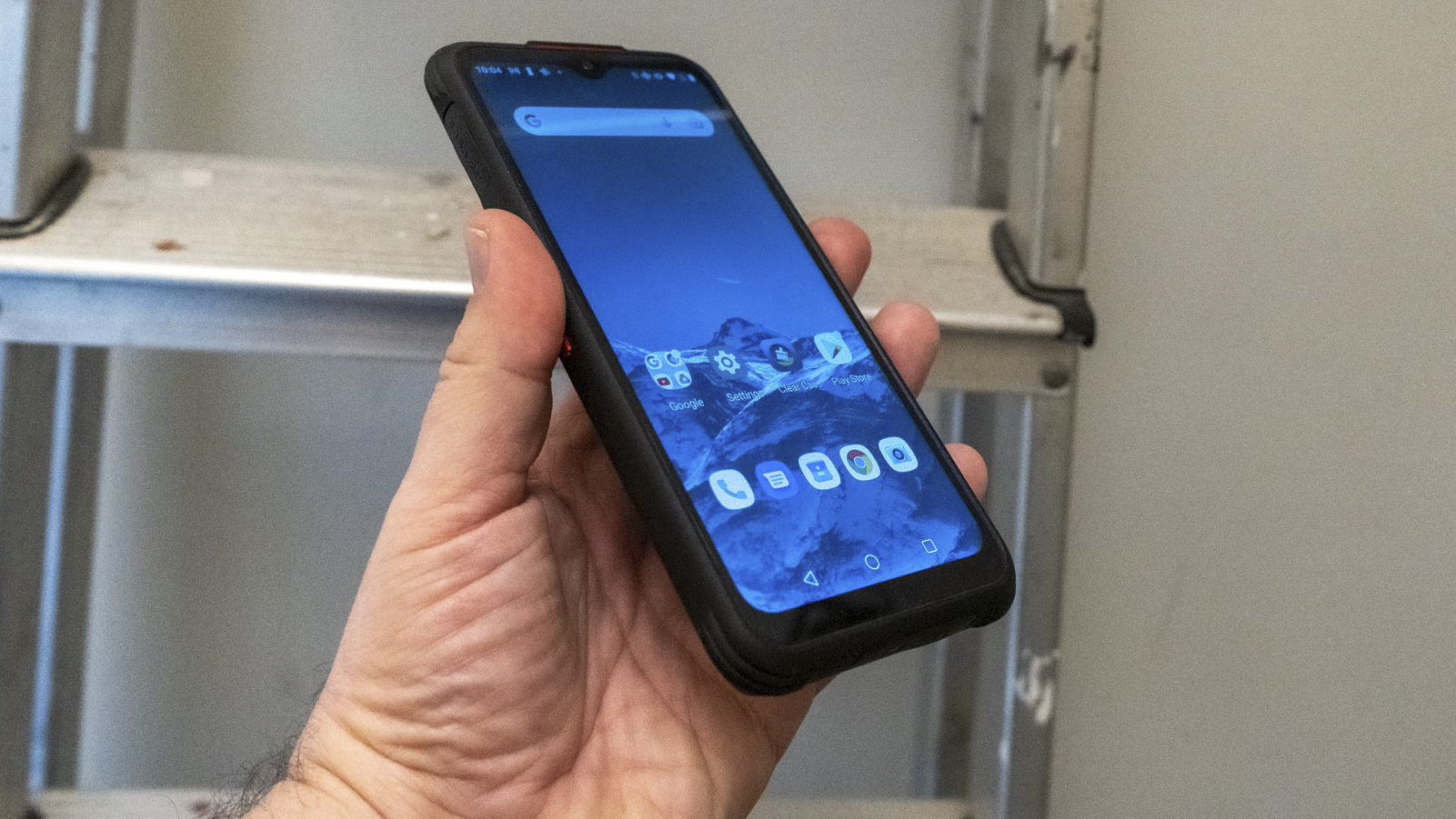
The Glory Pro’s design might raise the eyebrows of those more used to a generational competition for ever thinner phones with decreasing bezels. This handset has been designed not, one infers, with much concern about Apple or Samsung’s latest screen-edge measurements, but from a list of features which simply need to be included. If we’re honest, that doesn’t make it beautiful and certainly not small (though it’s worth remembering that most phones live in cases, and secondly that the look feels at home in the rugged category).
So, the list? What are the feature essentials that AGM have built their Glory series around? Every handset has a ridiculously loud 33mm diameter 110dB speaker, a two-lens optical camera system including a macro camera, a 16-megapixel front camera, a red customizable button, and a 120-lumen front torch (some variants place different modules here). It’s a slight disappointment that the laser measure in some versions has to make way for the dual-LED torch; we’d have like to have seen both.
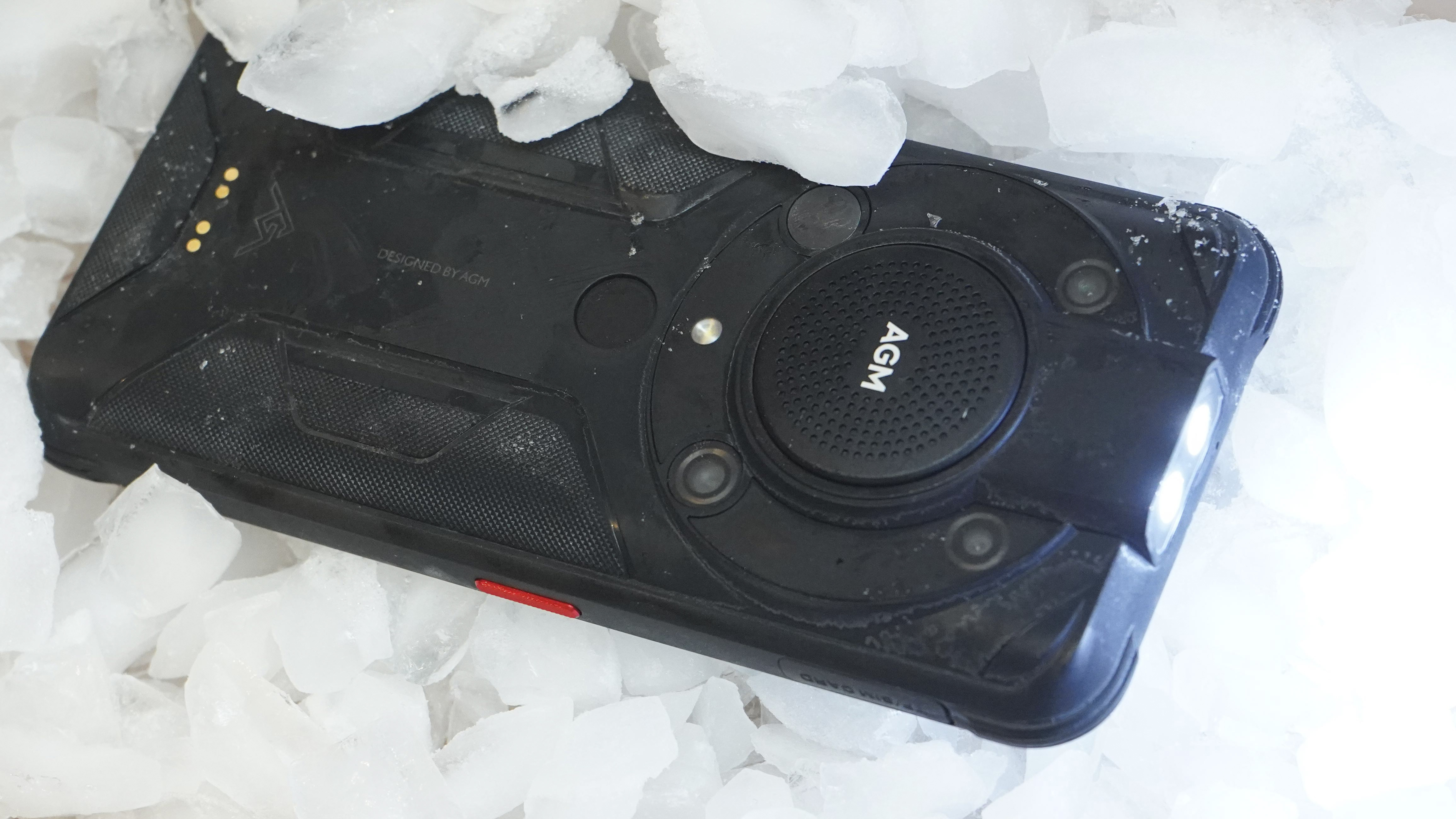
The Glory Pro, which we’re testing, features wireless charging, a 20-megapixel infrared night vision camera, sufficient illumination for this to work for about 30m / 100ft, and a thermal imaging camera too.
All of this is protected from the elements to IP68, IP69K and STD 810H standards and while we didn’t have the means to test the claim it is “one step from bulletproof,” we certainly didn’t manage to break it by dropping it. The design creates a floating frame (just as putting a flat phone in a taller case shields the edges of the glass), and the actual electronics is protected by a ball-and-grid underfill.
Manufactured from woven fiberglass (except the rubber plug cover), impacts are spread without affecting the core tech, while the back is made from a deliberately uneven bite pattern which should minimize accidental drops in the first place. The result does end up look quite a lot like a small phone in a tough case, though we didn’t find dust accumulating in the same way.
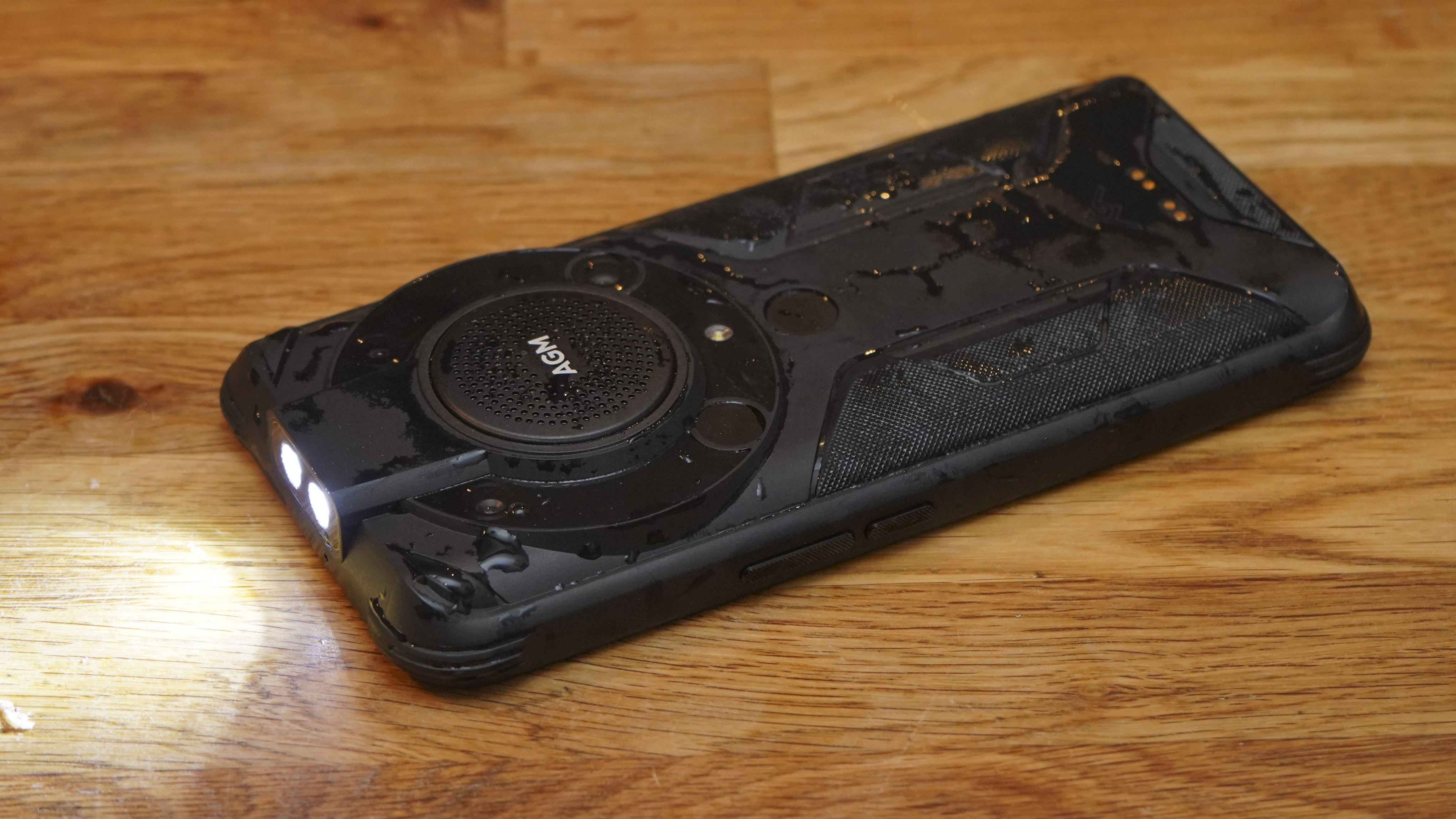
The arresting 6.53-inch LTPS screen is 24-bit and has only a small central notch nipping from its 2340 x 1080 pixels. Security is via a fingerprint scanner in the centre of the phone’s reverse (or there is the good old pin number approach), which means no extra equipment flanking the selfie camera.
In terms of size comparison, 6.53-inch is ever so slightly smaller than the iPhone 13 Pro Max’s 6.7-inch display, though – face on, at least – the Glory Pro is slightly larger (in terms of depth, with that speaker, and super-strong case, the Glory Pro seems much thicker). On the subject of Apple comparisons, despite all the ingress protection, AGM have managed to add a 3.5mm headphone socket and four POGO pins (for accessories). Oh, and a charger in the box. Always nice to have options.
Powering this is a Qualcomm Snapdragon 480 8-core setup with Adreno 619 GPU and 8GB of RAM, which seems plenty sufficient (if you’re not a gamer) but certainly not a flagship setup. The bloatware-free Android 11 install makes this snappier than many, and there is 256GB of storage, but there is also a MicroSD slot for plenty more.
AMG Glory Pro: Cameras
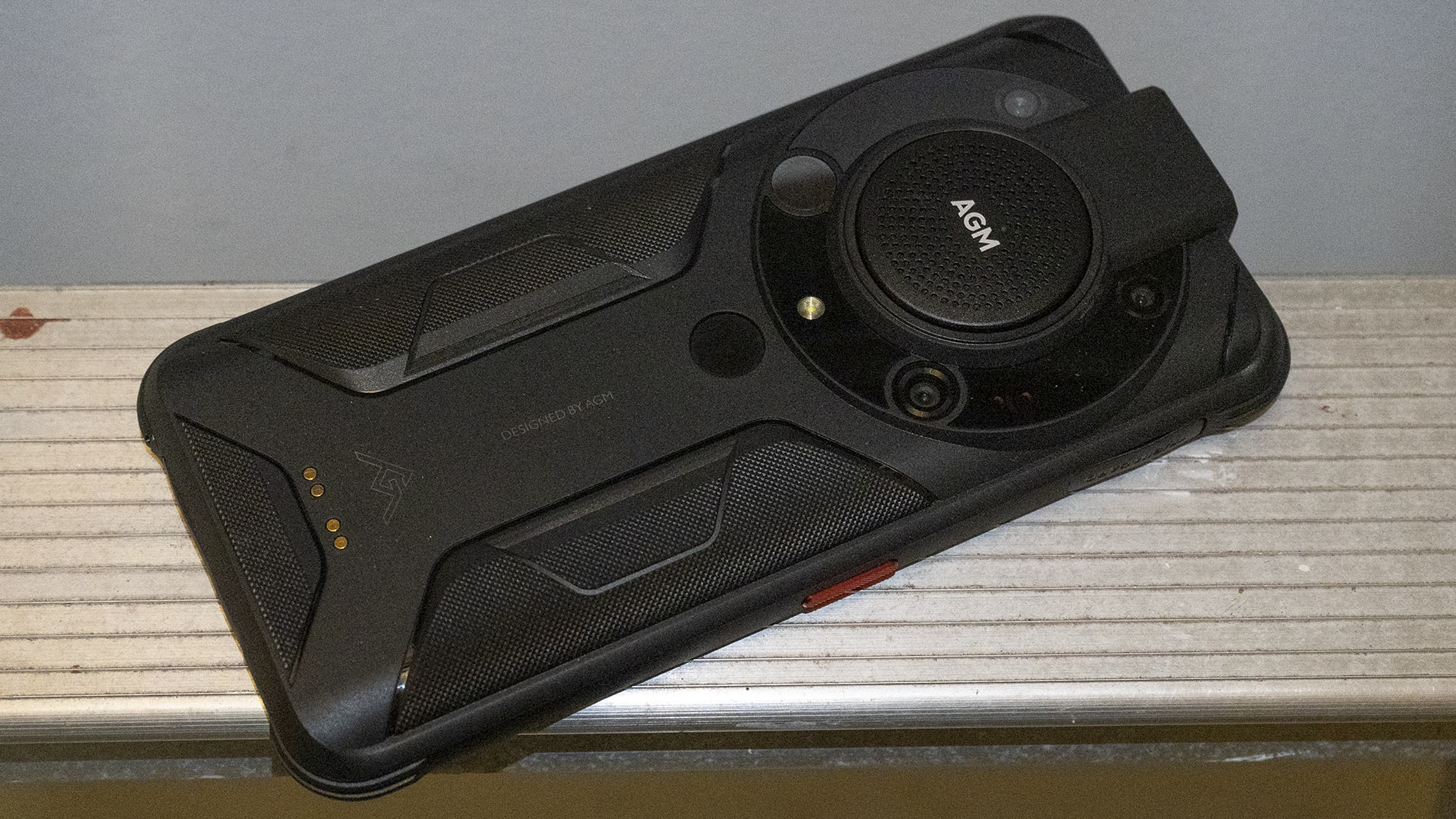
As noted, the four rear cameras are arranged around the speaker, behind the same clear element which shields the three camera LED illuminator lights (one optical, two IR). If you think it’s weird that there is a visible light LED here and a super-bright torch at the top remember that AGM’s handset is a modular design and in some editions that top is sold with a barcode scanner/laser measure.
The AGM Glory Pro’s main camera is an 8mm Sony IMX582 48-megapixel sensor behind a f/1.79 lens. It takes some nice photos (we’ll get to that) though geeks will note it has been superseded by the IMX586 in Sony’s range. It is a stacked CMOS Quad Bayer; each pixel is 0.8μm, so the 8000x6000 pixel images in daylight drop to 12-megapixels (4000 x 3000) in low light. In terms of video, though some 4K cameras exist with the same image sensor, the AGM is content to settle for 1080P which is a slight disappointment though the real-world benefits of higher resolution are still open to doubt.
The Macro camera is f/2.4 while the infrared (night vision) camera is a 20-megapixel Sony IMX365 which also sports a f/1.79 lens.
Camera operation is conducted via the standard Android app, with the main functions available at a simple swipe (Photo / Video etc.) while a ‘More’ page leads to manual settings, 48-megapixel mode, Panorama, Macro, high and low speed shooting which is all logical enough (it’d be nice to have a quick link to Predator-like thermal imaging camera though).
Portrait enthusiasts will find a range of effects like Studio Light, Stage Light and Rainbow Light to apply to selfies, too. The shooting experience’s only slight quirk – quickly resolved by changing brightness settings – was how fast the device decided to dim the screen; not an issue if you always work at 50% brightness.
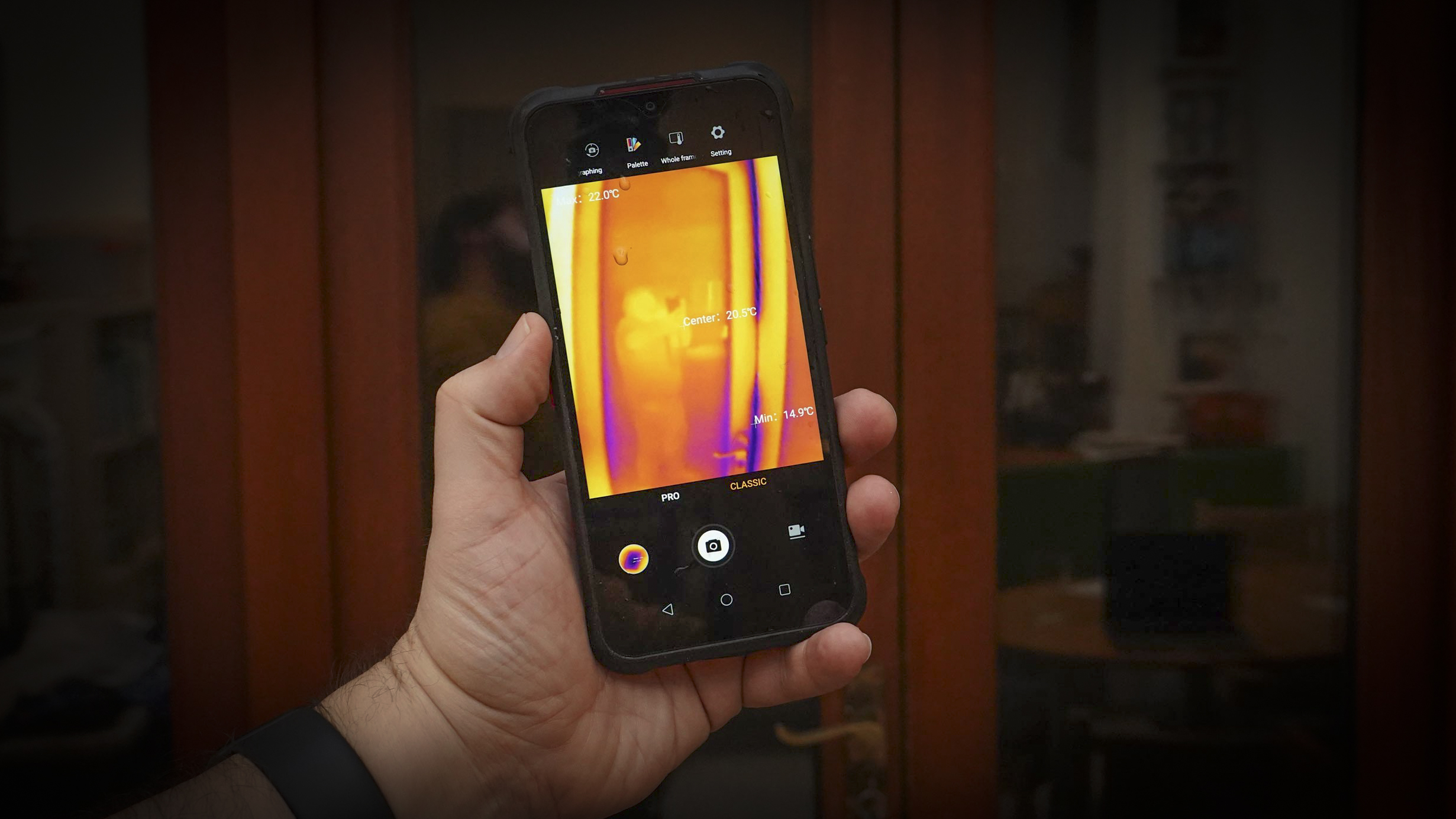
The thermal camera’s own app comes to make sense once you appreciate that the device is there to measure the surface temperature it sees as well as reveal variation. This it does well after a slight pause when coming to life, especially in comparison to the shuddering frame rates of other thermal devices on the market. Here it can be seen clearly identifying the poor insulation in these glass doors (as well as spotting the reflected warmth of the photographer in the glass).
The app offers a range of color palettes, a video mode, and the option to overlay the temperature readings (since the palette stays the same this helps, though it must be remembered that all thermal cameras show emissive heat so readings need to be understood. Nonetheless we can’t imagine a plumber, explorer, window fitter, geek or movie fan who wouldn’t want this feature so well implemented.

We were not convinced the infrared lighting could see much more than some cats eyes at the claimed 30m / 100ft, and in the video test we could see flickering from the illuminators, but it still lit up a 15m garden adequately.
The thermal camera, at 256 x 192 pixels, is better than most phones or thermal cameras, and has a pleasing 25fps. It’d be able to spot an unconscious person or animal in the dark at around 50m (150ft), though measurements are only accurate rather less than that range. The videos the app can create are enticing – and very sharable to the right crowd.
Camera performance

In 48-Megapixel mode (addressed from a sub-menu), the camera can produce a surprisingly sharp image given the right light. Not sure I’d want too many 30.6MB JPEGs on my phone, even if I can see the detail in the grass and dirt, as well as the wooden velodrome. Close examination of the corners does reveal slight softening of that sharpness though.

In exactly the same place, but facing the light source, things get a little different; the resulting image – still 48 megapixels – is ten megabytes less as the system simply isn’t able to handle the contrast. It’s made the right choices in terms of exposure but on closer inspection detail seems strangely inconsistent; the grass goes from rich texture to almost none by around the middle of the frame, and the same switch from sharp to uncertain is visible on the right of the image too, beneath the cranes.

In standard Photo mode, the 12-megapixel image helps reduce (but not eliminate) the apparent softness in the corners while the rich color and contrast is apparent. Close examination of the woodwork, especially the vents, in the velodrome, shows some moiré, but otherwise there is little to object to.

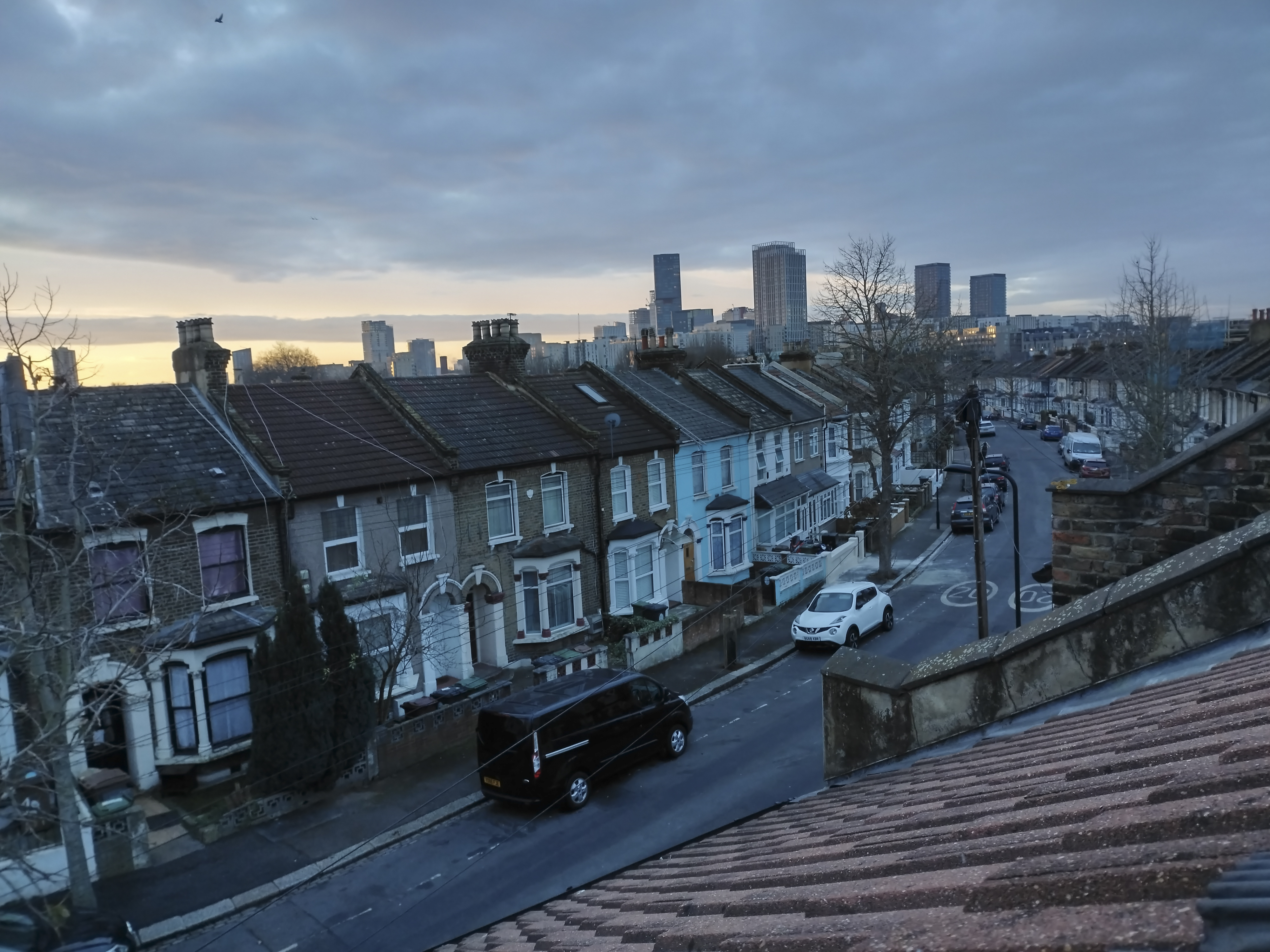

In terms of Zoom, there is only one main sensor, so all zoom is digital. The system will allow you to swipe up to 10x, though the pre-sets don’t suggest tapping beyond 5x. The software makes a decent job of the enlargement, so for capturing an image on a site survey, for example, this should prove above adequate even though there certainly seems to be room in the housing to pack an optical zoom.

The Macro camera – 1600 x 1200 pixels – proved adequate, although when we tested it in morning light it seems better able to handle the more muted tones of the purple flower than the pink it shared a bed with.

Turning the selfie camera on an unwise choice (an unkempt technology journalist still pondering where his coffee will come from) proved an interesting challenge for the ‘Portrait’ mode – which by default opts for the simulated Bokeh (this can be switched off).
That’s for the best as given challenging light, the main camera does a better job of disguising a morning mess (left) than the selfie camera’s algorithm handles a cluttered backdrop despite more even illumination.
Additional specs
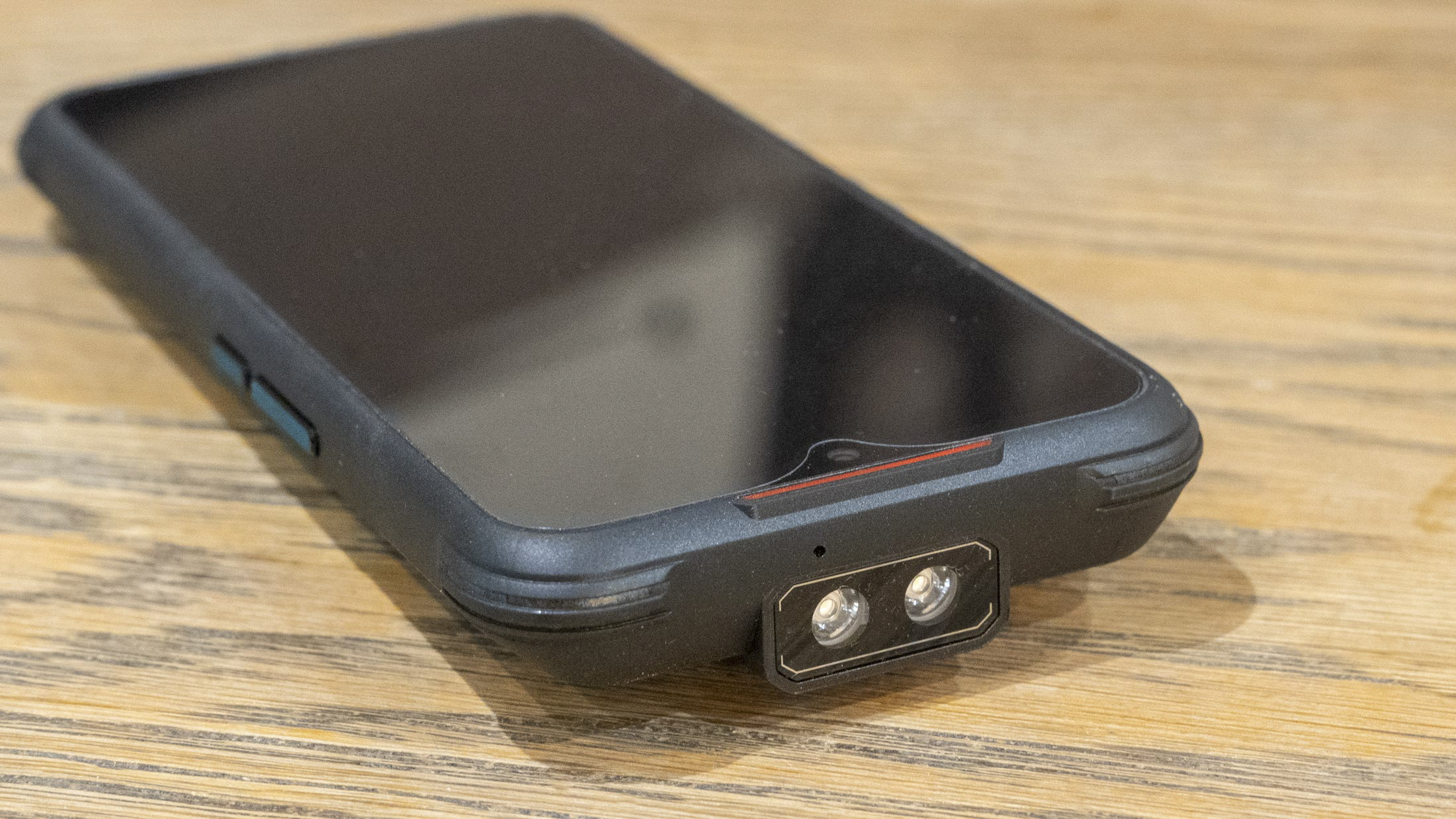
As we said, that huge 3.5W speaker is 110dB, making it broadly comparable to a low-end Bluetooth speaker. It’s certainly the loudest we’ve heard on a phone, and potentially one less thing to take camping. The quality is not phenomenal, but it’s It’s also potentially a tool repeating a looped warning message (sadly no ‘megaphone’ option, at least with the default software).
We were taken aback by the ability to survive the cold; a typical handset will not survive as their thin cases transferring outside temperatures to the battery rapidly. We tried in a typical household freezer, set to -24˚C (-11.2˚F) which is noticeably colder than the minimum temperature of other rugged handsets (for example Nokia XR20 or Kyocera DuraSport), and found that in one hour the battery lost just 2% (84% to 82%). We decided to give it a second hour, just to be sure, and it now read 76% – not too shabby.
AGM Glory Pro 5G: Our Verdict
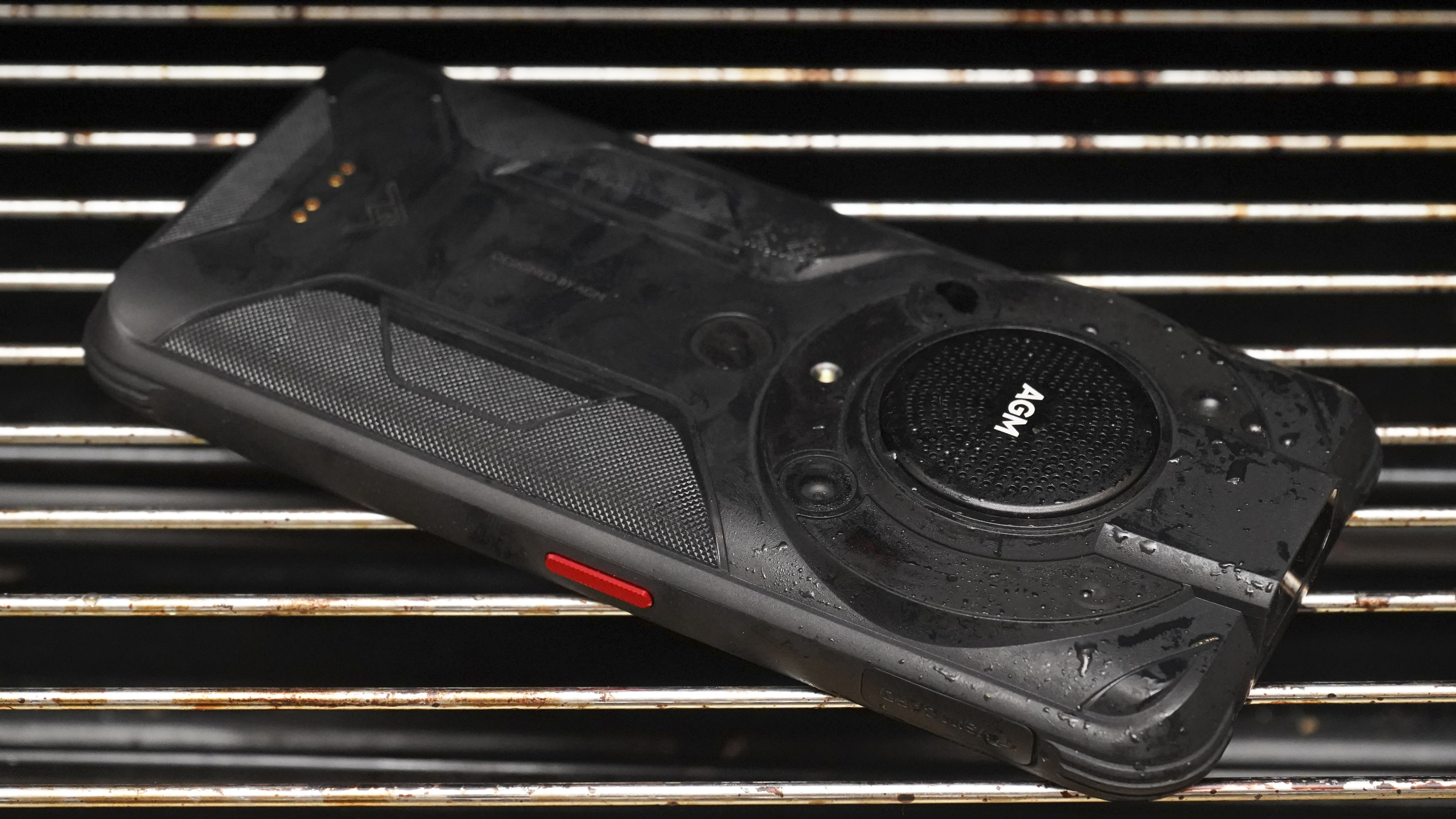
The Glory Pro 5G is both a spectacularly hardy and functional device and a fairly average phone, so the question you’ll need to ask yourself is whether you’re coming to it for the right reasons. There are other hardy phones in the world, some for a lower outlay, that offer similar optical cameras and processing grunt. AGM themselves will sell you a similar rugged phone without the thermal camera if you like the look but cash is an issue. If 5G is the treat you seek but you really like thinks sleek, we’d be remiss not to note Nokia’s rugged XR20, which also manages to look surprisingly svelte for a device in this niche.
Where this handset becomes glorious is when you need to do things with it that another phone just wouldn’t let you. Yes, that dropability is nominally found elsewhere but it is very very convincing here, and can be pushed past the minimum requirements for the ingress spec. Survival at low temperatures is better than most rugged phones, the thermal camera is not just the cheapest component but a real winner.
There are obvious uses for mountaineers, tradespeople and those with money to burn who like the look is also a niche we can see for content creators looking to augment their videos revealing the night-time world – thermal or infrared – thanks to the higher frame rate on offer. The main camera will not disappoint average users either so despite the size, its easy to imagine this being all that’s needed on certain expeditions, and that makes it an exciting
Read more
Best rugged phone
Best thermal imaging camera
Best waterproof phone
Best night vision goggles

With over 20 years of expertise as a tech journalist, Adam brings a wealth of knowledge across a vast number of product categories, including timelapse cameras, home security cameras, NVR cameras, photography books, webcams, 3D printers and 3D scanners, borescopes, radar detectors… and, above all, drones.
Adam is our resident expert on all aspects of camera drones and drone photography, from buying guides on the best choices for aerial photographers of all ability levels to the latest rules and regulations on piloting drones.
He is the author of a number of books including The Complete Guide to Drones, The Smart Smart Home Handbook, 101 Tips for DSLR Video and The Drone Pilot's Handbook.
